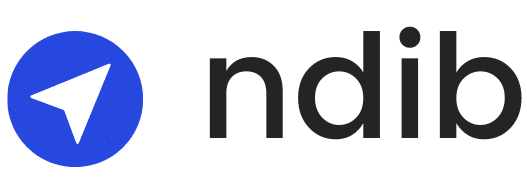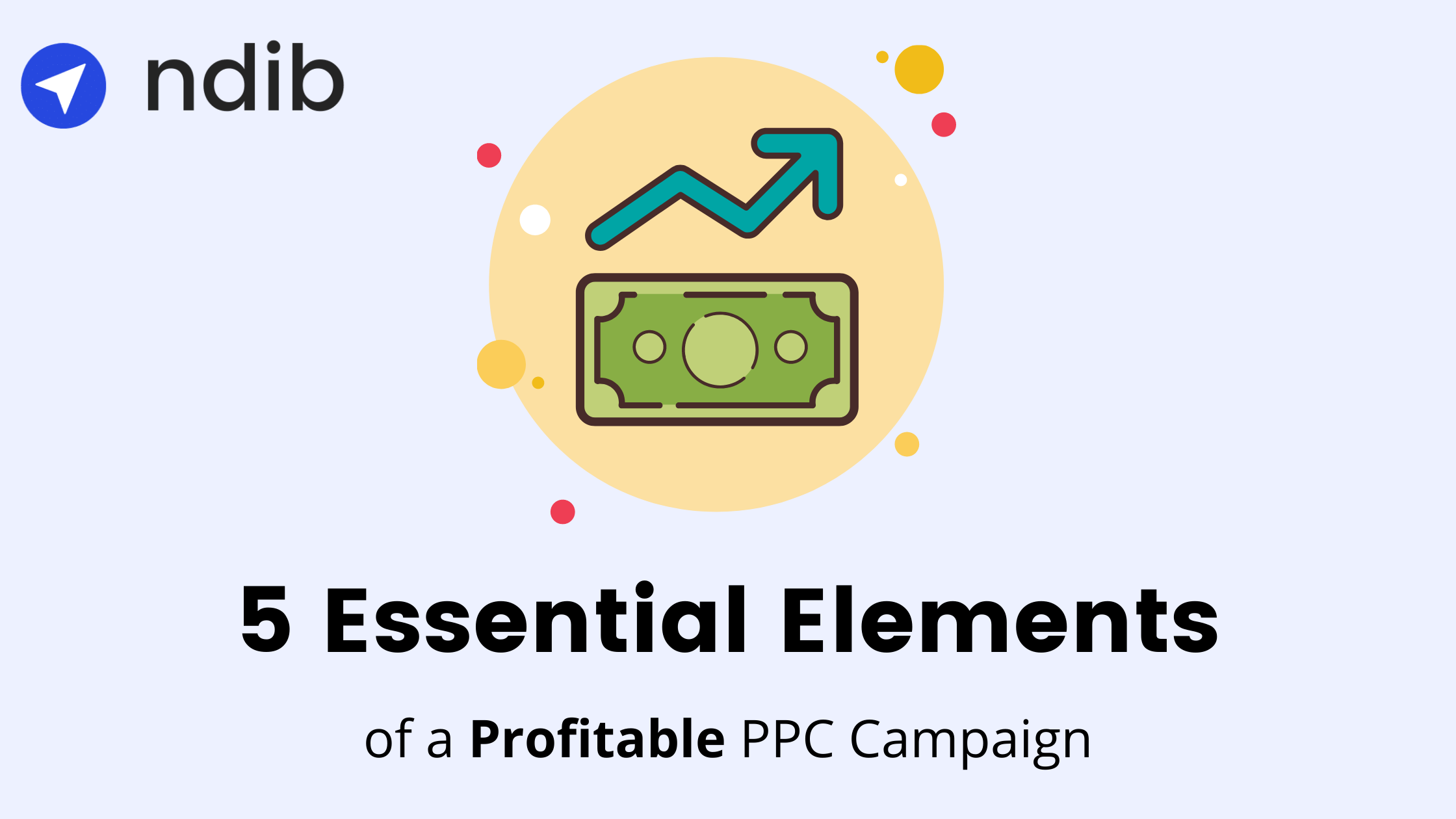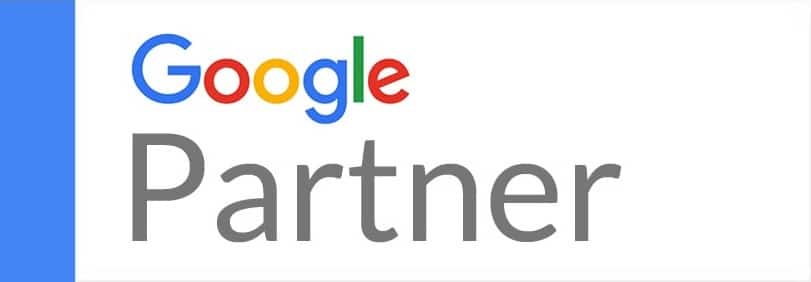When you are new to creating PPC campaigns, the amount of options can be intimidating, overwhelming, and frustrating.
You probably read about the variety of ad extensions, different keyword match types, the mountain of ad networks, and more ad formats than you know what to do with.
While each of these variables can be important to consider when crafting your Google Ads campaign management – they are not essential to building a profitable PPC campaign.
So what is essential?
What do you absolutely need to focus on to achieve the kind of results that other companies seem to be achieving?
From my years of running PPC campaigns, I have boiled down the 5 concepts that are essential for a profitable PPC campaign.
The five essential elements that every PPC campaign must have are:
- The Correct Offer For the Customer Intent
- Specificity
- Conversion Tracking
- Landing Pages
- Optimization
1. The Correct Offer For the Customer Intent
I call this the don’t go for the kiss on the first date theory (and here is a much longer blog I wrote about this one specific theory originally published in KissMetrics).
The basic premise of this theory is: Imagine that if you are in the middle of the first date with someone and things are going well. You ask them the typical date question So what do you do for work? Instead of answering the question they lunge across the table and try to make out with you. If that happened would be totally weirded out and want nothing further to do with them. It isn’t that you wouldn’t want to kiss them later, it is that their timing is completely off.
This concept is similar to what you are doing to your customers when they perform informational searches such as “TV comparisons” and instead of providing what they actually want (such as a comparison chart of TVs), you immediately try to sell them a TV.
It is not that they would never buy a TV from you, it is that your timing is completely off for what the customer actually wants, and it annoys them and drives them into the arms of your competitors.
Take a peek below:
Here is the search I typed in, where I was clearly looking for comparisons of televisions:

When I click on the first PPC ad, I am taken to a landing page that immediately goes for the sale (and try to sell me stands as well!) despite the fact that it is not at all what I asked for:

The second ad provides exactly the information I am looking for – look at all those nice comparisons. I may not buy a TV with them today because I am not ready yet – but they have earned my trust and are now on my shortlist of companies I will buy from in the future:

Users tell you exactly what they want with their search queries, and it is your only job to provide them what they want. As they go through the sales funnel (the series of steps towards becoming a customer), they will want different things such as information, calls, white paper, and yes, eventually, a purchase.
By consistently providing users what they want, your business builds trust, and when the customer is actually ready to purchase (aka go for the kiss), yours will be your arms they fall into.
Bonus Resource: This is an article I wrote, originally published in PPC Hero, that shows you how to see what the user actually typed in to see your ad.
2. Specificity
One of the essential elements of PPC is to be specific with your ads and landing pages (the page you send a user to after they click on your ad). Users almost always click on the most specific ad to their query.
Think of it from the user’s perspective, and imagine you were in a boating accident and needed to find a boating accident lawyer. If you typed in that exact query and you would receive the following search engine results page (SERP):

Let’s review some of the ads from least specific to most specific.
- Best Motorcycle and Pedestrian Injury Lawyer – while those are both types of lawyers, they are only fooling themselves if they think that someone in a boating accident who types in boating accident lawyer will click on those general ads. Those are not only not specific, they are not even really applicable to my situation.
- Accident Lawyer and Top Accident Lawyer – these are both accident lawyers. Still, compared to the ones that actually mention boating, they will not receive the clicks because they are too general. They need to be tailored to the individual search.
- Boating Accident Lawyers – Nationwide Maritime Law Firm – These ads are the most specific to our search query and will more than likely receive the lion’s share of the clicks because of that.
You must be as specific as possible and tailor your ads to what the user types in. The more general ads simply do not get clicked, which causes a major problem because of how Google Ads works.
However, to understand this, you need to know a small amount of history about PPC…..
Originally when online ads were first introduced, it was the advertiser who would pay the most for the click who would show up first in the results. However, this was somewhat ineffective as the user wasn’t exactly getting what they were looking for, and for this reason, the ads didn’t get clicked.
This meant the search engines didn’t get paid (since they generally only get paid on clicks), and the user was left unhappy with their experience.
This all changed when Google entered the PPC market and introduced something called quality score. The quality score is how Google judges your keyword/ads combo. The way the Google Ads auction works, your quality score can dramatically affect your cost per click (to see the actual mathematics of how the auction works, be sure to check out the bonus resource).
So we know that Google cares about quality, but how do they judge what a quality keyword/ad combo is? What they did (and still do) is use click-through rate as a proxy for quality. Your click-through rate is the number of times people see an ad vs. the number of actual clicks it garners.
The higher the click-through rate, the higher the quality score, the lower your cost per click. As we saw, the more specific your ads are, the more likely they are to get clicked. Creating specific ads is essential to getting a solid return on ad spend.
Bonus Recourse – This is an article about how the actual cost per click is calculated with the mathematics behind it.
3. Conversion Tracking
Every single PPC campaign should have a business goal. In Internet advertising/nerd speak, this business goal is called a conversion.
A conversion is the action that you want your user to perform once they hit your landing page. Simply going to your page cannot be the goal, it must be an action, and it must have a business result. Conversions can include:
- Form fills (typically used in exchange for an eBook)
- Purchasing a product (typically used for products under $200.00)
- Contacting a sales rep
- Calling your company (one of my favorites because the ROI is so high when users talk to a live person)
Once you decide on what your conversion goal is, you need to track it. This allows you to do more of what is converting and delivering business results and less of that which is not.
Like anything else, there are about a million different ways and systems to measure your conversion. However, I believe in simplicity, and the following are the simplest ways that I have found:
- Google Ads – Here at Nerds Do It Better (NDIB), we typically install the conversion pixel, which is just a line of code that Google Ads provides on the Thank You Page after someone completes a form. The only way that someone can reach this Thank You page is when they complete the conversion. Here is our typical conversion process and where the pixel is:
- User sees the ad:

- The user is taken to the landing page where our conversion goal is for them to download the eBook and provide their email information.

- Once they submit their information they are automatically taken to a Thank You page. It is on this page, in the code, where the AdWords conversion pixel fires.

When it fires, I get data about the exact keywords, ads, and landing page that caused this conversion. Since we are always testing in real-time, I am able to see what actually works, delivers real-world business results, and do more of it.
- Facebook – Similar to Google Ads, we install the conversion pixel on the Thank You page. Facebook data tells you what ads are driving the conversions and the demographics and psychographics of the audience that converted as well.
- Calls – We use CallRail, which tells you what keywords drive the calls. Additionally, you can see which keywords drive calls that are worth targeting as not all calls are created equal. With our clients (mainly lawyers), we know that calls over 7 minutes are more valuable than those 30 seconds calls, and we allocate the budget more towards the keywords which drove those longer calls.
4. Landing Pages
A landing page is a page you send the user to after they click on one of your ads, and it essential that you utilize them.
The number one mistake that I see newbies make when they begin PPC is sending users to the homepage rather than sending them to a designated landing page after they click an ad. This presents a variety of problems:
- The homepage is not specifically designed for conversion. There are usually extra buttons and options which distract the user from performing the conversion then you want. Any distractions lower your conversion rate.
- Traffic is coming from many places to your homepage. For your landing page, you know the traffic and create the page based on the specific types of users coming to it.
A well-designed landing page will increase your return on ad spend, and you design the landing page with one goal in mind…. to get your user to convert. It is essential you use them.
5. Optimization
No matter what ad network you choose to use or what your PPC goals are…. PPC is not a set it and forget it.
This is so essential that I am going to put it here one more time, right in the middle:
PPC is not set it and forget it
PPC is dynamic, and new competitors are constantly trying new strategies and tactics. Additionally, you need to stay on top of your account to utilize the learning from the real data pouring in. This learning and the changes you make from it are what we call in the Internet advertising community optimization.
Optimization can include activities like:
- Adding new keywords
- Adding negative keywords (search queries you don’t want to show for)
- Testing your ads. The higher your click-through rate in Google Ads, the higher your quality score, the less you have to pay for each click.
- Optimizing your landing pages. You want to test elements like images, call to actions, and the design to see what makes users convert.
- Changing the bids on your keywords
- Geographical testing. See if you get more conversions in one area of the country and adding additional budget to those areas.
- Seeing how users respond differently on different devices. You will find that users have dramatically different goals and actions on mobile phones than desktop devices.
Wrapping it up:
Now you know the five essential elements of any proper PPC campaign. Utilizing these should help you realize a return on ad spend that works with your company’s business goals.
What do you consider to be essential to your PPC campaign?



